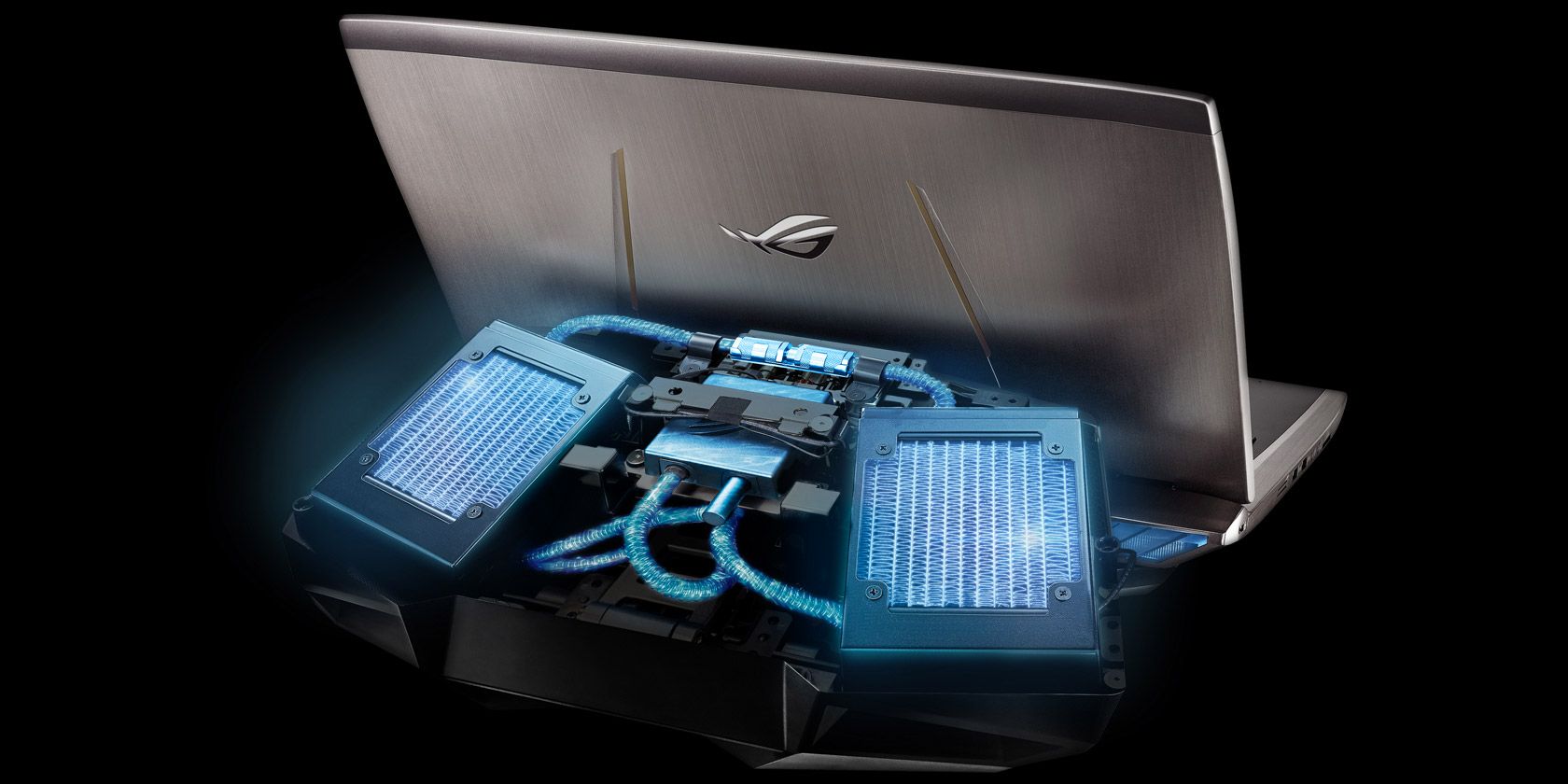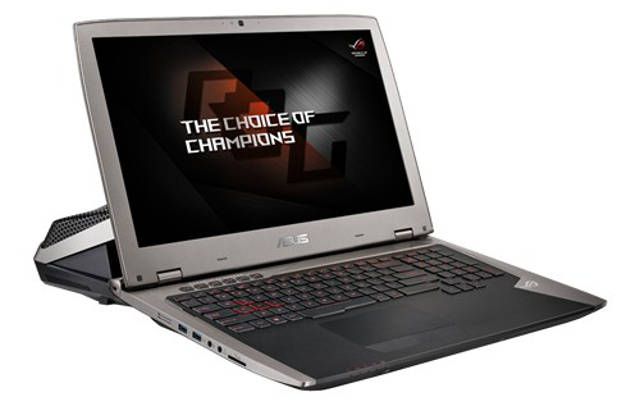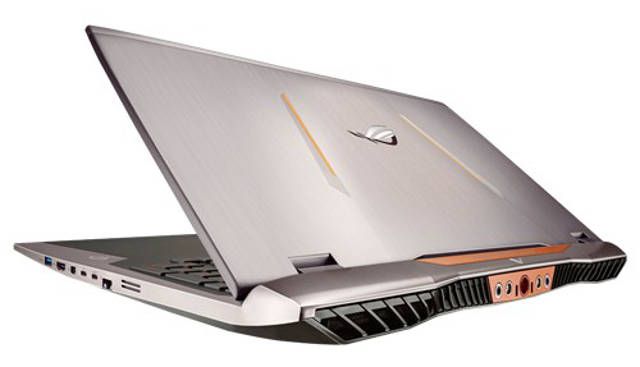If you've ever tried gaming on a laptop, you know how frustrating it can be. Even after you've done everything you can to boost your laptop's gaming performance, it's rarely enough. Until now, desktops have always reigned supreme as gaming machines.
To be fair, there are a lot of great gaming laptops on the market right now, and if you really need a powerful rig that you can take anywhere, then they're your best option. (Keeping in mind the stark differences between gaming laptops and desktops that you should know about.)
But in September 2015, ASUS unveiled the world's first water-cooled laptop -- the ROG GX700 gaming laptop -- and it's a big enough breakthrough to change the face of portable gaming for years to come.
What Is Water Cooling?
Let's make one thing absolutely clear right off the bat: water is harmful to electronics, so much so that even a single drop can completely destroy an entire device. This is why it's crucial to handle laptop spills in a specific way -- so that nothing gets fried.
In that light, water cooling may sound like a contradiction. But it isn't. Not long ago, engineers found a way to leverage the heat-absorbing properties of water without damaging electronic parts in the process. And now that technology is available for laptops, too.
The concept of water cooling is simple: it starts with a water source. That water is pumped in through tubes and flows over a piece of hot metal which is drawing heat out of the CPU and GPU. The water absorbs the heat, flows back to the source, is cooled down, and repeats.
In practice, it's much more complex than that. Water itself isn't easy to cool, and takes a lot of energy to do so. Plus, the system needs to be robust because a single leak could result in catastrophic damage (though I've never heard of that happening).
Water cooling offers two main benefits: it cools down hot components faster than air fans, and it's much quieter than air fans. Both of these benefits are important when trying to crank out power from a laptop, where air ventilation is often poor.
So here are three big improvements that you can expect from water-cooled laptops that you probably won't be able to get in air-cooled laptops (for the foreseeable future, anyway).
1. Desktop Parts in a Laptop Body
We've written guides for buying the best budget laptops and buying the best mid-tier laptops, and in both cases, the most important consideration is the processor. As it turns out, laptop processors are usually gimped due to the constraints of being portable.
As mentioned before, ventilation is often crippled in laptop cases. Even the best designs are cramped, which results in sub-optimal air flow, and this means that components usually have to have their power scaled back so that they produce less heat.
Problems with heat dissipation are also why many laptops don't have dedicated GPUs. Have you seen modern graphic cards? The powerful ones usually come with two built-in fans because that's how much heat they generate. A normal laptop simply can't handle that.
But with water cooling, optimal air flow matters a lot less. If heat can be dissipated by water, then manufacturers have more freedom to put in more powerful components. Now you can get desktop-quality parts in a laptop case, and you can take it anywhere you go.
Don't believe me? The first water-cooled laptop -- the ASUS ROG GX700 -- will have an Intel Core i7-6280HK processor and an NVIDIA GeForce GTX 980, which is unheard of outside of a desktop!
2. Overclock for Even More Power
Anyone who's serious about resource-intensive tasks (e.g. gaming, video editing, audio encoding, etc.) has probably dabbled in overclocking before. If not, then they've at least thought about doing it. It's an effective way to get more power out your system.
If you don't know what it is, overclocking is when you force your hardware to run at a faster speed than what the manufacturer set it to run at. Most components, including CPUs, GPUs, and RAM, can be overclocked, but there's usually some risk in doing so.
The main risk is that an overclocked component requires more electricity. That extra power has to come from somewhere, after all, and that extra energy translates into extra heat. Extra heat can not only cause parts to wear down faster, but it can also cause your system to become unstable (e.g. random crashes).
In a desktop, overclocking usually requires you to install additional fans to help air circulation and reduce heat buildup. In a laptop, your options are more limited unless you're using water. And because water is so good at keeping a system cool, you can eliminate those loud, noisy fans.
Every serious laptop gamer should think about overclocking their system, but in order to get the most out of it, consider saving up for a water-cooled device in the near future. It will take you farther than you thought possible.
3. Ultra HD 4K Is Now Possible
So what does all of this mean? Essentially, it means you'll be able to play the latest games at maxed out settings without any issue. Water cooling is the most effective form of cooling we have today, and with it available on laptops, we're going to see a huge jump in laptop computing power.
That means you'll be able to play games and/or edit videos in Ultra HD 4K, which is double the resolution size of 1080p. This is good news because the world of media entertainment is steadily moving towards 4K.
Netflix is already starting to offer many of its shows in 4K, and if you care at all about YouTube Red's original content, most of them will be available in 4K as well. And yes, 4K games are already here on PCs, and a lot of them look great.
The problem is that 4K requires a lot more power to compute than 1080p, and it's hard enough to get that high on a desktop while maxing out graphics settings. Until now, 4K on a laptop was a pipe dream. With water cooling, it's much closer to reality.
Next-gen gaming with beautiful graphics and massive resolutions on a portable machine that you can take anywhere and everywhere? We're moving into the future with this, yes we are.
Water-Cooled Laptops: Worth It or No?
Now it's time to talk about the elephant in the room: water-cooled laptops are going to be expensive. There's no way around this. Even if cheap versions were available, I'd be too afraid of the quality (i.e. water leaks) to bother with them.
A top-of-the-line gaming laptop today will set you back a few thousand dollars at the very least. Throw in a water cooling system, more powerful components, and a bit of markup for development costs, and I wouldn't be surprised if they cost between $5,000 to $10,000.
So really, the only people who really need a machine like that are professional gamers and hardcore enthusiasts. If you don't care about tip-top quality, settle for a regular powerhouse laptop. If you do want power but have a small budget, build your own PC instead.
What are your thoughts on water-cooled laptops? Too niche? Too excessive? Too pricey? Share with us in the comments below!



